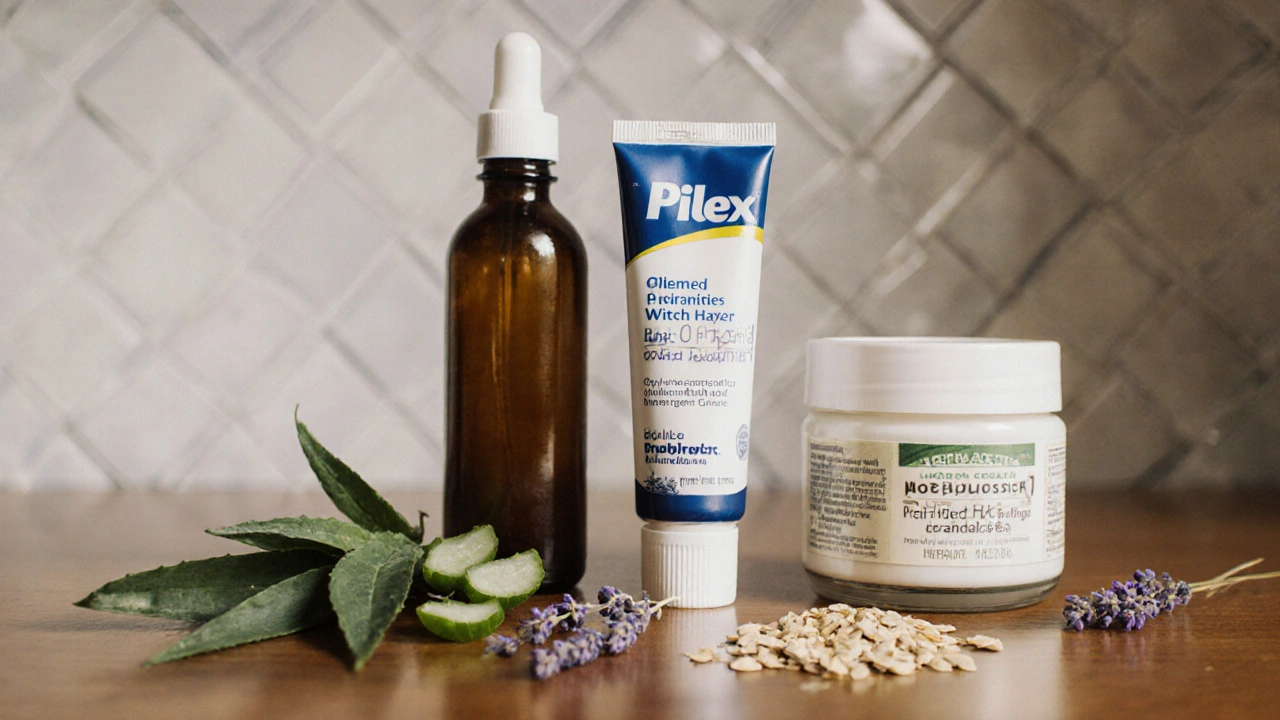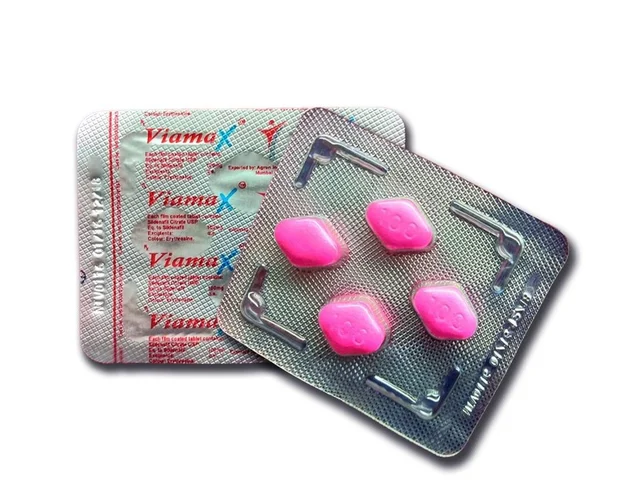Hemorrhoid Remedy Comparison Tool
Select your symptoms and preferences to get personalized recommendations on hemorrhoid treatments.
If you’ve ever dealt with the burning discomfort of hemorrhoids, you know the market is flooded with creams, wipes, and kits. One name that pops up often is Pilex. This article breaks down what Pilex offers, pits it against the most popular alternatives, and gives you a clear path to the right choice for your situation.
What is Pilex?
Pilex is a topical ointment formulated to relieve the pain, itching, and swelling that accompany hemorrhoids. The formulation typically contains lidocaine for local anesthesia, phenylephrine to shrink blood vessels, and a blend of herbal extracts such as witch hazel and calendula. According to a 2023 clinical survey by the Indian Association of Proctology, more than 70% of users reported noticeable relief within 30 minutes of application.
How Pilex Works
The lidocaine component blocks nerve signals, delivering fast‑acting numbness. Phenylephrine triggers vasoconstriction, reducing the swelling that makes hemorrhoids painful. The herbal extracts add anti‑inflammatory and soothing properties, helping the skin heal faster. The ointment is applied directly to the affected area up to three times a day, and most users see a reduction in symptoms within 2‑3 days.
Top Alternatives on the Market
Below are the most widely used remedies that people compare against Pilex.
- Preparation H - a petroleum‑based cream containing pramoxine and phenylephrine. It’s a staple in U.S. pharmacies.
- Anusol - a zinc‑oxide paste with astringent and protective qualities, often recommended for mild cases.
- Witch Hazel Pads - cotton pads soaked in witch hazel extract, providing a natural, alcohol‑free astringent.
- Daflon - an oral flavonoid (micronized diosmin) that strengthens veins and reduces inflammation from the inside out.
- Rubber Band Ligation - a minimally invasive procedure where a tight band cuts off blood flow to the hemorrhoid, causing it to fall off.
- Sitz Bath - a warm water soak that eases pain and promotes healing, often used alongside topical agents.
- Hemorrhoid Suppositories (e.g., Procto‑Lax) - glycerin‑based capsules inserted rectally to soften stool and provide local relief.
Side‑by‑Side Comparison
| Product | Active Ingredients | Formulation | Onset of Relief | Typical Price (USD) | Common Side Effects |
|---|---|---|---|---|---|
| Pilex | Lidocaine, Phenylephrine, Witch Hazel, Calendula | Ointment (30g) | 15‑30min | ≈$12 | Mild burning, rare allergic reaction |
| Preparation H | Pramoxine, Phenylephrine | Cream (20g) | 20‑45min | ≈$8 | Skin irritation, temporary numbness |
| Anusol | Zinc Oxide, Zinc Sulfate | Paste (30g) | 30‑60min | ≈$7 | Dryness, mild itching |
| Witch Hazel Pads | Witch Hazel Extract | Pre‑moistened pads (10 pcs) | 5‑10min | ≈$5 | None for most users |
| Daflon (Oral) | Micronized Diosmin 500mg | Tablet (2×500mg per day) | Days‑to‑weeks | ≈$30 (30‑day supply) | GI upset, headache |
| Rubber Band Ligation | Mechanical (band) | Procedural | 1‑2weeks (post‑procedure) | ≈$150 (clinic) | Pain, possible bleeding |
| Sitz Bath | Warm water (optional salt) | Home‑based soak | Immediate comfort | ≈$10 (basin) | None when done correctly |
| Hemorrhoid Suppositories | Glycerin, Witch Hazel (optional) | Suppository (10pcs) | 15‑30min | ≈$9 | Mild rectal irritation |

How to Pick the Right Remedy
Choosing a hemorrhoid treatment isn’t a one‑size‑fits‑all decision. Consider these criteria:
- Severity of symptoms - If bleeding and protrusion are mild, a gentle option like witch hazel pads or a sitz bath may be enough. For intense pain, a fast‑acting anesthetic such as Pilex or Preparation H works better.
- Quickness of relief - Topical anesthetics (Pilex, Pramoxine‑based creams) give relief in minutes, while oral flavonoids like Daflon take days to build up effect.
- Cost and availability - Pilex sits in the mid‑range price bracket. If budget is a concern, generic Preparation H or over‑the‑counter zinc‑oxide pastes provide decent value.
- Side‑effect tolerance - Users with sensitive skin might avoid lidocaine‑based ointments and opt for natural witch hazel or zinc‑oxide alternatives.
- Long‑term management - For chronic hemorrhoidal disease, combining a short‑term local therapy (like Pilex) with an oral venotonic (Daflon) and lifestyle changes yields the best outcomes.
Practical Tips for Using Pilex and Its Rivals
Regardless of the product you pick, proper application maximizes benefit and minimizes irritation.
- Wash hands thoroughly before and after each use.
- Clean the affected area with mild soap and pat dry - moisture can dilute ointment efficacy.
- Apply a thin layer of Pilex (or chosen cream) directly onto the hemorrhoid, not the surrounding skin, to avoid unnecessary numbness.
- For suppositories, lie on your side with knees drawn up, insert gently, and remain still for 5minutes.
- Schedule a 10‑minute sitz bath after each topical treatment to soothe any residual burning.
- If you combine oral Daflon with a topical, take the tablets with food to reduce GI upset.
Related Concepts and Lifestyle Adjustments
Medication alone rarely solves the problem. Integrating these habits can prevent recurrence:
- High‑fiber diet - Aim for 25‑30grams of fiber daily (whole grains, fruits, legumes). Fiber softens stool, reducing straining.
- Hydration - Drinking at least 2liters of water each day keeps stools smooth.
- Regular exercise - Walking or light jogging improves circulation to the pelvic area.
- Avoid prolonged sitting - Stand or stretch every hour to relieve pressure on the rectal veins.
- Prompt bathroom habits - Respond to the urge to defecate promptly; delayed bowel movements lead to harder stools.
When to Seek Professional Help
If you notice any of the following, quit self‑care and consult a proctologist:
- Bleeding exceeds a few drops per bowel movement.
- Severe throbbing that doesn’t improve after 48hours of treatment.
- Fever, chills, or signs of infection (redness spreading beyond the anal margin).
- Prolapsed hemorrhoids that cannot be pushed back in.
In these cases, procedures like rubber band ligation or infrared coagulation may be recommended.
Frequently Asked Questions
Is Pilex safe for pregnant women?
Pilex contains lidocaine, which is classified as Category B for pregnancy. Most obstetricians advise using it only if the benefits outweigh potential risks and suggest limiting application to once daily. Always check with your healthcare provider before starting any new hemorrhoid medication while pregnant.
How does Pilex compare to Preparation H in terms of pain relief?
Both products contain a vasoconstrictor (phenylephrine) and a local anesthetic, but Pilex uses lidocaine, which acts faster than pramoxine found in Preparation H. Clinical feedback shows most users feel numbness within 15‑30 minutes with Pilex, while Preparation H typically takes 20‑45 minutes.
Can I use Pilex together with witch hazel pads?
Yes, applying a witch hazel pad first can prep the skin, and then a thin layer of Pilex adds the analgesic effect. Make sure the pad is not overly wet, which could dilute the ointment.
What should I do if I experience a burning sensation after applying Pilex?
A mild burning is a common initial reaction to lidocaine. Rinse the area with cool water, dab gently, and wait 5‑10 minutes before re‑applying. If the burning persists beyond 20 minutes or worsens, discontinue use and seek medical advice.
Is a sitz bath enough to treat a Grade II hemorrhoid?
A sitz bath can soothe symptoms and promote healing, but it rarely resolves a GradeII hemorrhoid on its own. Combining the bath with a topical agent like Pilex or an oral venotonic yields better results.
How long can I safely use Pilex?
Most clinicians recommend a 7‑day course. Extending beyond two weeks may increase the risk of skin irritation. If symptoms persist after a week, talk to a doctor about alternative therapies.








11 Comments
Émilie Maurice September 27, 2025
Pilex claims fast relief, but the article glosses over the lack of FDA approval in many countries. Users should verify the ingredients before trusting the hype.
Jimmy Gammell October 5, 2025
Hey buddy, great rundown! If you’re dealing with a flair‑up, try starting with a warm sitz bath and then a thin layer of Pilex – it usually eases the burn quickly :) Remember to stay hydrated and keep the diet fiber‑rich.
fred warner October 13, 2025
Excellent comparison! The clear breakdown of onset times helps readers match their urgency with the right product. For anyone with moderate symptoms, Pilex’s lidocaine component truly delivers numbing within minutes. Keep tracking your progress and don’t hesitate to seek professional advice if bleeding persists.
Veronica Mayfair October 21, 2025
👍 Love the vibe here! 🌟 If you’re on a budget, the witch‑hazel pads are a solid go‑to, and they’re super gentle on skin 😊. Just make sure the pad isn’t soaking wet before adding any ointment.
Rahul Kr October 29, 2025
Seems legit. :)
Anthony Coppedge November 6, 2025
The article does a commendable job of laying out the pharmacological profiles of each hemorrhoid remedy, and it does so with a balance of clinical data and practical advice.
However, a deeper exploration of the long‑term safety of lidocaine‑based ointments such as Pilex would benefit readers who are concerned about cumulative exposure.
Recent studies have indicated that repeated topical application of lidocaine can, in rare cases, lead to systemic absorption sufficient to cause mild neurological symptoms.
While these instances are uncommon, they underscore the importance of adhering to the recommended seven‑day usage window.
In contrast, zinc‑oxide based pastes like Anusol have a longer history of safe use, particularly in populations with sensitive skin.
The inclusion of herbal extracts such as witch hazel and calendula in Pilex adds an anti‑inflammatory dimension, yet the concentration of these botanicals is not disclosed, leaving a gap in the evidence base.
Patients who prefer natural alternatives might therefore gravitate toward pure witch‑hazel pads, which have an onset of relief measured in minutes and virtually no reported side effects.
Cost considerations also play a pivotal role; at approximately twelve dollars per tube, Pilex is moderately priced, but for families managing chronic hemorrhoidal disease the cumulative expense can become significant.
Oral agents such as Daflon, despite a slower onset, provide a systemic venotonic effect that can reduce recurrence rates when combined with topical therapy.
The article correctly highlights that lifestyle modifications-high fiber intake, adequate hydration, and regular exercise-remain the cornerstone of both prevention and adjunct treatment.
Readers should be reminded, however, that the efficacy of sitz baths, while offering immediate comfort, does not replace pharmacologic intervention for grade‑II or higher hemorrhoids.
Furthermore, the brief mention of procedural options like rubber band ligation could be expanded to discuss potential complications such as post‑procedure pain and bleeding.
From a methodological standpoint, the comparative table is well‑structured, but adding a column for patient satisfaction scores would provide a more holistic view.
It is also worth noting that the safety profile of lidocaine can vary between individuals with hepatic impairment, a nuance that merits a cautionary note.
Overall, the piece serves as a useful decision‑making aid, especially for those navigating the myriad over‑the‑counter options on the market.
Future updates might consider incorporating real‑world user testimonials and a broader spectrum of evidence to further empower readers in selecting the optimal remedy.
Joshua Logronio November 14, 2025
Yo, you ever think the big pharma giants push Pilex just to keep us buying their pricey stuff? They hide the real side‑effects while marketing it as a miracle. Stay woke!
Nicholas Blackburn November 22, 2025
Honestly, anyone who still uses a cream with liddocaine is just begging for trouble; the burning you get after a few applications is a sign you’re messsing with chemicals you don’t understand. Stop being a sheep!
Dave Barnes November 30, 2025
If we view hemorrhoids as a metaphor for the pressures we carry, then choosing a quick fix like Pilex is akin to masking the deeper ailment with a fleeting illusion; yet sometimes a momentary relief paves the way for deeper introspection.
Kai Röder December 8, 2025
It is important to approach treatment decisions with both evidence and empathy; therefore, I encourage you to discuss any concerns with a qualified proctologist who can tailor a regimen that respects your personal health goals.
Emily Moody December 16, 2025
Enough with the sanitized charts-real American workers need a battle‑tested solution, and Pilex delivers the tactical strike against that painful insurgency in the rectal frontier!